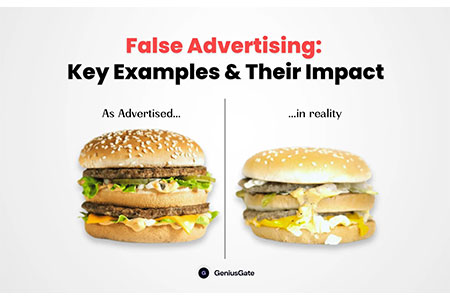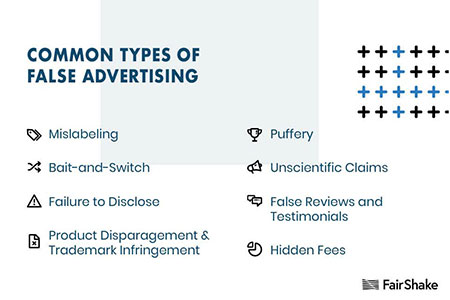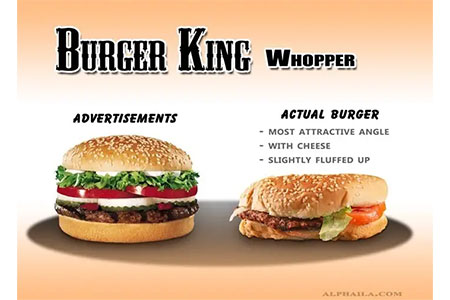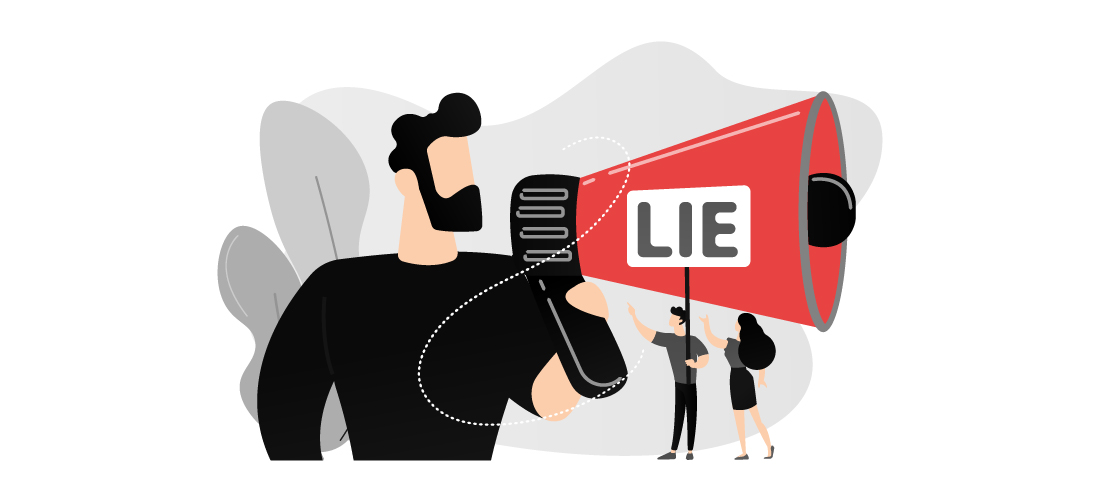Misleading Advertisement
What is Misleading Advertisement?
Deceptive advertising is any form of advertising communication whose intention is to deceive or mislead consumers concerning a product or service. This is through overstating, hidden conditions, or manipulated images that project a deceptive impression. The purpose is most likely to unfairly sway buying decisions. As much as it can bring short-term gains to businesses, the long-term consequences, fines, and loss of trust can be catastrophic. Educated consumers are the best defense against such misleading advertising practices.

Types of Misleading Advertisement
False or Exaggerated Product Claims
These occur when a brand overstates the advantages or characteristics of a product to attract buyers. An example is claiming that an overnight quick cream removes every wrinkle. Such claims are both scientifically baseless and intentionally deceitful. Such promises can deceive hopes and lead to disappointment, grievances, and ultimately loss of confidence in the brand.
Deceptive Pricing Strategies
Bait and switch pricing manipulates consumers into thinking they are getting more for their money than they are. This includes such tactics as exaggerating the "original" price to make the size of the bigger discount look as large as possible or hiding additional charges until the consumer reaches the checkout line. While such tricks might lead to sales in the short term, they will blow up in the company's face when consumers realize they have been duped, undermining brand trust.
Bait and Switch Advertising
This is a strategy of selling something at very low prices to attract customers and then telling them that the item has been sold out, and convincing them to purchase an advanced model. Such misleading marketing not only infuriates consumers but also shatters their trust, which might lead them away permanently.
Misleading Visuals or Packaging
Brands also use digitally-drawn pictures or false packaging to make a product appear larger, more attractive, or superior in quality than it is. These eye-catching practices generate unrealistic hopes and are an insidious but efficient form of consumer deception.
Ambiguous or Hidden Terms and Conditions
Ads may have upfront deals that are appetizing but hidden in ambiguous or unclear words. These hidden conditions, such as limited time offers, automatic renewals, or conditional prices, may come as a shock to consumers and are a hallmark of deceptive advertising.
Use of False Endorsements or Testimonials
Others involve fabricated or sponsored endorsements in the form of genuine consumer testimonials. Be it a staged celebrity endorsement or a rehearsed endorsement, these fraudulent activities take advantage of consumer confidence and mislead about the actual value or strength of a product.
Manipulative Comparative Advertising
Comparative advertising turns fraudulent when firms play with facts to make their products superior. This includes misquoting competitors, picking and choosing facts, or using inexact comparisons. These tactics create a false sense of superiority and can confuse consumers who apply genuine comparisons.

Real-Life Examples of Misleading Advertising
Comparative advertising turns fraudulent when firms play with facts to make their products superior. This includes misquoting competitors, picking and choosing facts, or using inexact comparisons. These tactics create a false sense of superiority and can confuse consumers who apply genuine comparisons.

Impact of Misleading Advertisement
Loss of Consumer Trust
When customers realize that they've been tricked, consumer belief in the brand is irretrievably lost. The falsehood can be transferred from the product to the brand in general, nibbling away at future profits and customer loyalty.
Damage to Brand Reputation
One fake campaign is enough to destroy years of brand development. Bad press, social media ridicule, and consumer backlash can turn very quickly into an out-of-control reputational disaster to be stuck with.
Legal Penalties and Fines
The regulatory authorities impose strict penalties for misleading advertising in terms of heavy fines and product bans. Legal sanctions not only burden company purses but also serve as public warning signs that help to further increase the loss of brand trust.
Financial Loss for Consumers
False advertisements can induce consumers to buy ineffective or overpriced products, leading to wasted money. In extreme cases, such as those involving pseudoscientific medical advertisements, these financial losses can be compounded by health risks.
Competitive Disadvantage for Honest Brands
Deceptive advertisers attract immediate attention while ethical brands are punished for telling the truth, even when they are within the law. Such an uneven playing field has the potential to discourage ethical marketing and bring down industry levels in the future.
Negative Word-of-Mouth and Reviews
Angry and disappointed customers prefer to voice their experience online. Social media posts and bad word-of-mouth travel very fast, causing more damage and keeping would-be customers away from engaging with the brand.
Regulatory Scrutiny and Loss of Advertising Privileges
Repeat offenders may face increased scrutiny by advertising authorities or even be barred from certain channels. Once a brand has been reported, subsequent campaigns become subject to increased scrutiny, potentially limiting marketing freedoms.
Laws and Regulations Against Misleading Ads
The Consumer Protection Act, 2019, in India, regarding misleading advertisements, also empowers the regulators to punish the businesses or impose a ban on misleading campaigns. The Advertising Standards Council of India has also played a major role in monitoring advertisement copy and exercising self-regulation on the advertisers. Another instance is with the Central Consumer Protection Authority (CCPA), as it may even initiate suo motu action against any offender. These acts are to ensure that the advertisement is indeed honest, transparent, and fair toward the consumers.
How to Identify and Avoid Misleading Ads
Look for Overly Bold or Absolute Claims
Be wary of claims like 100% guaranteed or works instantly. They are typically unsupported by science and employed to induce instant buys without inquiry by emotional appeals.
Read the Fine Print Carefully
The devil is most often in the details. Fine print contains important information like conditions, time limits, or surprise fees that completely change the nature of the offer being promoted.
Verify Endorsements and Testimonials
Always ask yourself if an endorsement or testimony sounds authentic. While some advertisements may claim to be supported by such justifications, never really accept an endorsement at face value until you have found some independent reviews or consumer opinions.
Be Cautious of Unrealistic Prices or Discounts
If it looks like a bargain, then it almost always isn't. Beware of low prices or exaggerated discounts since these usually come with strings attached or some kind of deceitful stunt.
Research the Brand or Product Independently
Do take time to scour websites for genuine customer feedback and experiences prior to making one's purchase. Where possible, third-party websites or sincere forums will state the far from truthful advertising.
Understand the Use of Visual Tricks in Ads
When someone uses Photoshop or retouches images or styles them the product appears visually improved. You should remember that advertisements often display products differently than what you will find when seeing them in real life.
Stay Informed About Consumer Rights and Advertising Laws
Knowledge is power. Learn about your consumer rights and about advertising laws formed by the government. Deciding armed with this knowledge will empower you to act sensibly and fight injustices.

FAQS
An advertisement that follows ethical standards presents factual information while deceptive advertisements manipulate facts and hide information to mislead consumers.
The Consumer Protection Act of 2019 forbids deceptive advertisements and imposes penalties which may include fines or bans or prosecution depending on the offence's seriousness.
The CCPA and ASCI enforce the norms against advertising and fraud.
Complaints can be submitted as an online complaint on the ASCI website, one can approach consumer courts for complaints, and complaints can be lodged using the National Consumer Helpline to register complaints against false advertisements.
Yes, a bad choice of words, poor fact-checking, or over-imaginative communications can mislead consumers at times, even when a brand never meant to deceive them.
Some companies tempted by immediate gains, under premium pressure, or lacking adequate process controls might, despite the risk, proceed with--or neglect due diligence on--false advertising.
Gather evidence, contact the company directly, and if unresolved, file a complaint with ASCI or the consumer forum. Taking action helps prevent future violations.



